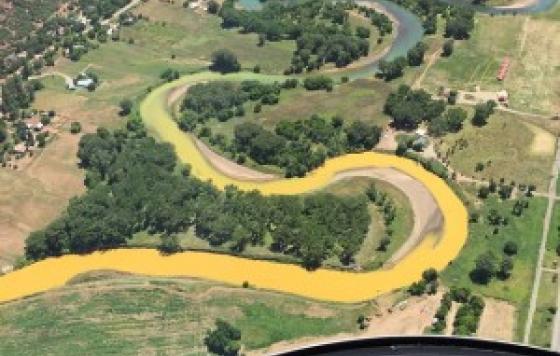
Clean Water Action now has eyes and ears on the ground in northeastern Japan. Former Connecticut Co-Director Roger Smith is investigating the tsunami recovery as he settles into a new position in the tourism section of the Town of Matsushima. The following is his first update from Japan:
By Roger Smith, Former Connecticut Co-Director (roger@fleetinglightmedia.com)
The referenced media source is missing and needs to be re-embedded.
In August I made a big life change and began work in the tourism section of the Town of Matsushima, in northeastern Japan. Matsushima boasts one of Japan’s three famed views for its array of pine-covered islands in Matsushima Bay. These features also spared Matsushima from heavy damage in the 2011 tsunami. My role with the Matsushima town government is to help support foreign tourism to this region, which dropped off precipitously after the earthquake, tsunami and nuclear disasters. I encourage you to come visit this vibrant area that needs your support.
Today is about 3.5 years after the day of disasters known as 3.11 in Japan. One of my frustrations with reading foreign news reporting about the disasters is the singular focus on the nuclear catastrophe, and the conflation of it with the earthquake and tsunami. For example, Time Magazine’s recent feature story, The World’s Most Dangerous Room (paywall) completely missed the broader recovery and the political and social changes it engendered.
While there is no sugarcoating the environmental and human cost of the meltdown of multiple nuclear reactors, Japan was fortunate that most of the airborne radioactive material ended up blowing towards the ocean and that the tremendous amount of radioactive fuel in the spent fuel pools appears to have survived the tsunami intact. Of course all is not well, as a few towns near the plant will remain uninhabitable for the foreseeable future, there are hotspots of radioactivity in places that are mostly safe, radioactive groundwater is still escaping from the reactor site into the sea, and the removal of all spent fuel and permanent containment of the site is many, many years away.
The referenced media source is missing and needs to be re-embedded.
How much of northern Japan was affected by radiation? An independent citizen radiation monitoring network called Safecast has published maps of the spread of radioactivity using data gathered by volunteers. On this map you can see how a plume of radioactivity extended northwest from the crippled reactors.
Ordinary background radiation levels in New England appear to be in the aqua to blue range if compared to this map. Matsushima is lower, also in the deep blue range (~.03 μSv/hr.) In addition to this volunteer-run network, there is also a vast official monitoring network (Japanese) that also measures radioactivity in water and tests food products. I look at the solar powered radiation monitor in front of Town Hall each day on my way to work. The readings hardly vary.
If you compare the spread of radiation to the massive swath of coastline affected by the tsunami (and even greater area damaged by the largest earthquake in Japan’s recorded history) you can see that most of northern Japan wasn’t appreciably affected by the nuclear disaster.
Politically, big changes are underway that will take years to play out. Japan went from a country generally accepting of nuclear power to one where every single reactor has been shut down. With general public sentiment against restarting them, the current conservative government which wants to bring nuclear power back is offering significant successions, like permanently shuttering older nuclear plants.
One of the takeaways from the Time article was how the nuclear disaster was “Made in Japan” due to cultural tendencies not to question authority. I’m not sure the US should be so complacent. The reactor’s containment system was “Made in America” with a design by General Electric, and coziness between industry and government regulators is hardly unique to Japan. Unlike Japan, the US is keeping reactors that are nearly identical to Fukushima Dai-ichi running near major population centers (sorry Boston). While Clean Water Action has worked tirelessly for years to reduce water impacts and risks from plants like New Jersey’s Oyster Creek, no plant of that design is likely to return to service in Japan. Perhaps commentators will one day write about the US’s difficultly learning from the experiences of others and ascribe it to America’s unique but dysfunctional political culture
The Time article completely missed the signs of hope at the local level, where towns are leading a shift towards clean energy. Fukushima Prefecture is working towards achieving 100% renewable electricity by 2040, and some towns have even more aggressive goals. Solar power appears standard on new homes built here. Resiliency efforts put the post-Sandy recovery to shame as a number of tsunami-hit towns decide to not rebuild in the flooded areas at all and instead keep people and critical infrastructure out of harm’s way. Interestingly for democracy, residents and local non-profits often have a real voice in how their town’s recovery takes place.
Let’s not add to the trauma of the disaster by branding an entire region as a place with no future. In my time here I look forward to telling some of these local stories and how they fit into a bigger political context. I appreciate your help in spreading these stories, and encourage you to share your thoughts, questions and ideas with me.
The referenced media source is missing and needs to be re-embedded.
Matsushima Bay, September 9 2014 Super Moon
Roger Smith
Matsushima, Japan
roger@fleetinglightmedia.comRelated Posts
Stay Informed
Get the latest updates and actions:
Thanks for signing up!
There was a problem processing your signup. Please try again.


